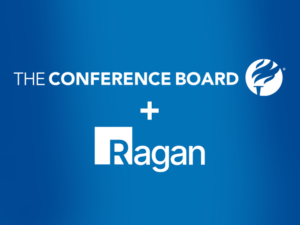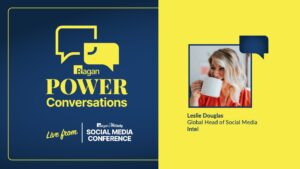How communicators build multigenerational bridges
A New York Women in Communications event during Comms Week covered women’s experiences in comms and what lies ahead in the field.

After several days of informative content, networking opportunities and shared thoughts on the way forward in the field and networking opportunities in Austin at Ragan’s Future of Communications conference, the events shifted to New York City. On November 8, the New York Women in Communication joined Ragan in hosting “Building Bridges – Cultivating Connections in Communications.”
The event featured a keynote panel with Linda Boff, chief marketing officer at General Electric (GE), and two panels that focused on intergenerational and interdisciplinary approaches to the comms trade.
Here’s what we learned.
Crafting a forward-thinking narrative
After some opening remarks from Brandi Boatner, manager of digital and advocacy communications at IBM, the morning kicked off with some thoughts from Linda Boff. She shared her thoughts and experiences on a wide range of subjects, including the path of her own career and the future of comms leadership.
During the conversation, she alluded to GE’s history of storytelling in the public sphere, and that the ability to craft a narrative is the biggest key for any communicator.
“Our legacy is our storytelling,” she said. “My hope is that the things we do to create a solid storytelling foundation are what propel our organizations forward.”
Boff also told the younger people in the room to take chances in their careers, emphasizing the value of having a solid team around them.
“Get the reps and learn by doing,” she said. “But it’s also really important to have a great set of folks around you that you can bounce ideas off of.”
Overcoming multigenerational gaps
The first panel of the event discussed how comms pros can work to effectively break down generational divides within the office. The conversation started with an interesting statistic — panel moderator Randi Liodice, president and chief strategy officer at Kaplow stated that the current workforce has five generations as a part of it, underpinning the need for customized communication.
Gabe Gomez, account supervisor for social, influencer and community for the Gen Z Lab at Edelman, cautioned the gathered audience to avoid making assumptions about any particular demographic when creating comms strategies for different generations within their organization.
“Placing assumptions can get in the way of building bridges in the workplace, Gomez said. “If you put an entire generation in a box, that can affect how you communicate with them. It’s important to remember that everyone has different preferences for communication and different lived experiences.”
Alex Osten, head of strategic partnerships at Meta, added that building the aforementioned cultural connections is as important as ever, particularly with respect to the hybrid workforce and the need to form real cultural bonds at work with respect to the lives and backgrounds of employees.
“We don’t just live in a work environment one day and a personal environment another day,” Osten said. “These things all sort of come together.”
An interdisciplinary focus
The final panel of the day centered on the many points of focus communicators have within their roles, including interaction with functions like marketing, advertising, public relations, internal comms, and more. Hosted by Eleanor Hawkins of Axios, the panel talked about the shifting roles communicators have to play and how to ensure that the right messaging appeals to the right stakeholders.
Abi Evans, chief growth officer at Dentsu Creative U.S., said that every time a comms pro works with a different client or stakeholder, they capture different perspectives and data points, and that it’s important to take stock of them while also realizing that the job of a communicator is multifaceted.
“Whether it’s visuals, brand campaigns, or social, it can really all plug into one thing,” she said. “Remember, 50 years ago, there might have just been one communications person in a company.”
Evans later called back to the earlier panel and stated that multidisciplinary comms pros must focus on building bridges, first and foremost. That sometimes takes a self-audit to determine what processes are and aren’t optimal.
“It’s a matter of dealing with humans more like humans and less like functions,” she said. “You have to find the right partners and the right ways of working to get the right results.”
Sean Devlin is an editor at Ragan Communications. In his spare time he enjoys Philly sports, a good pint and ’90s trivia night.







